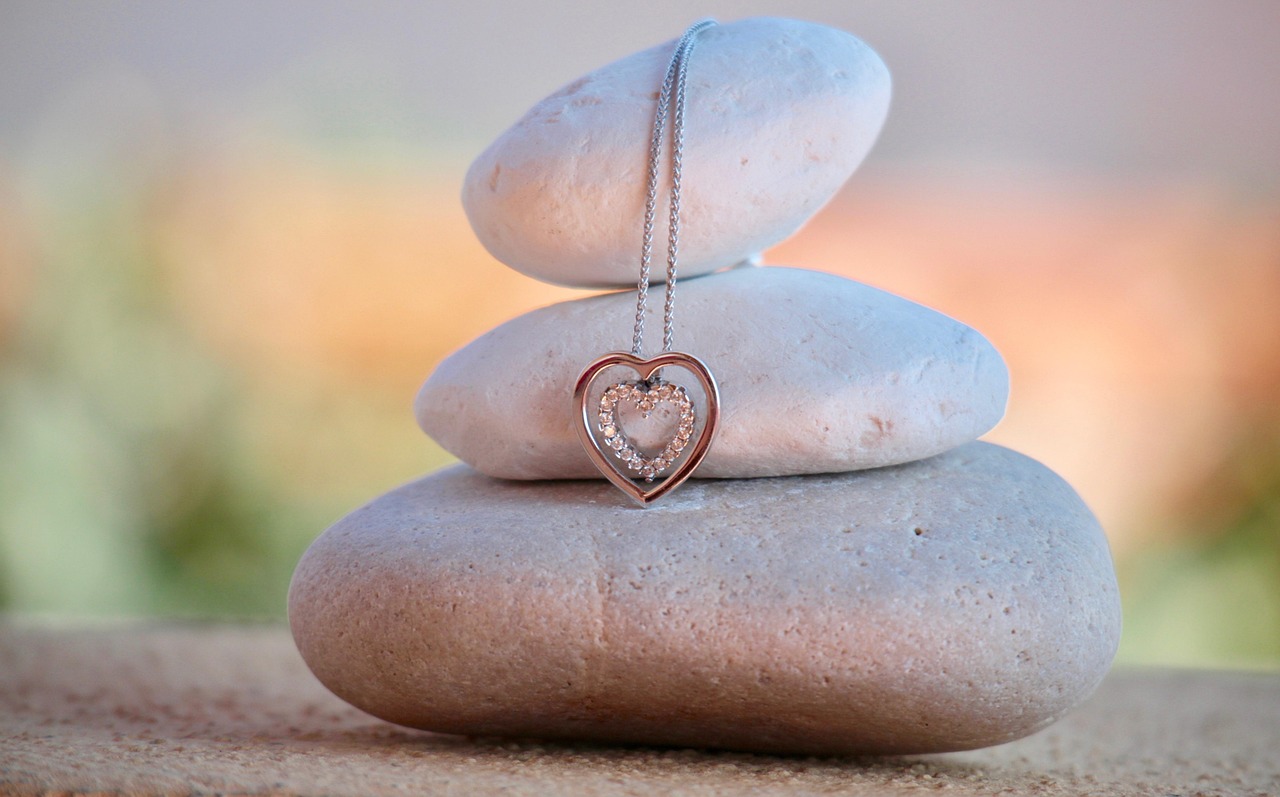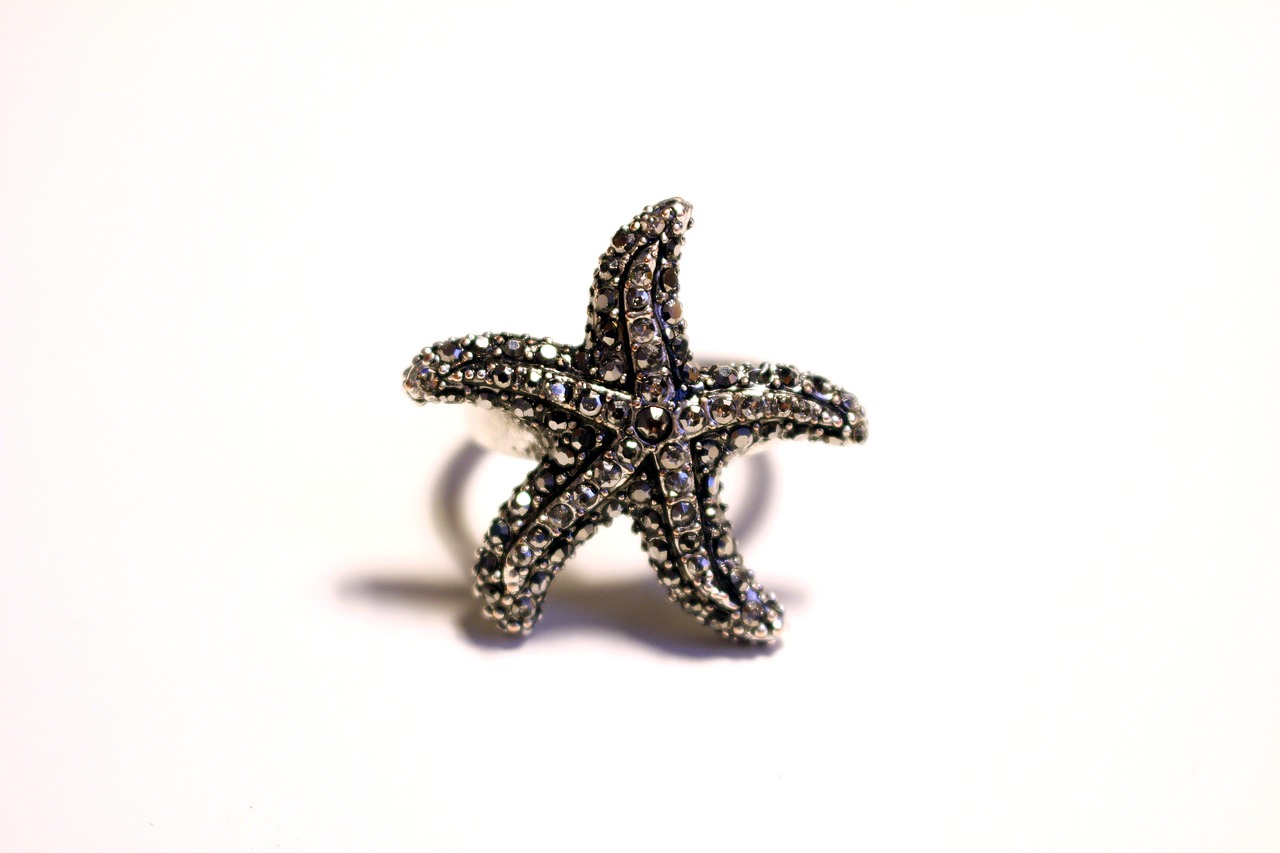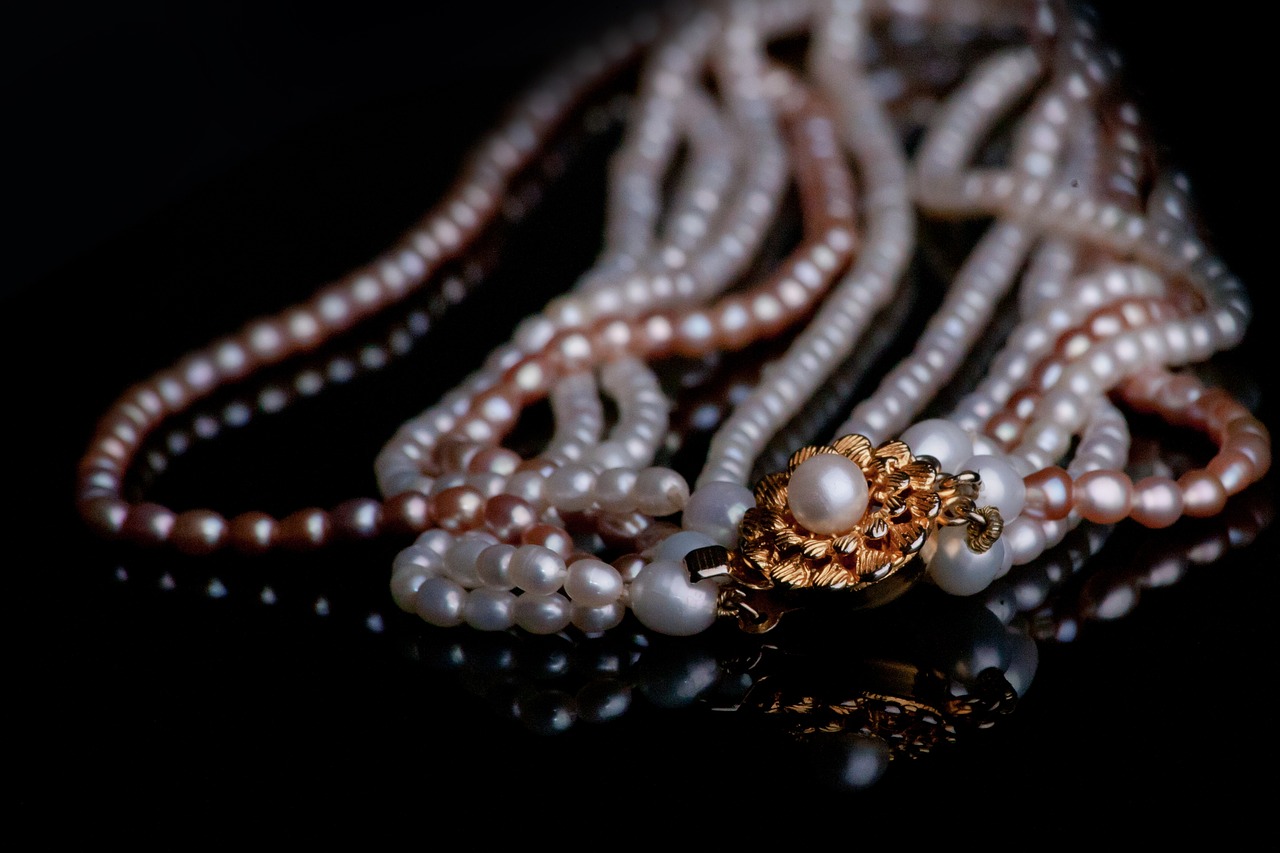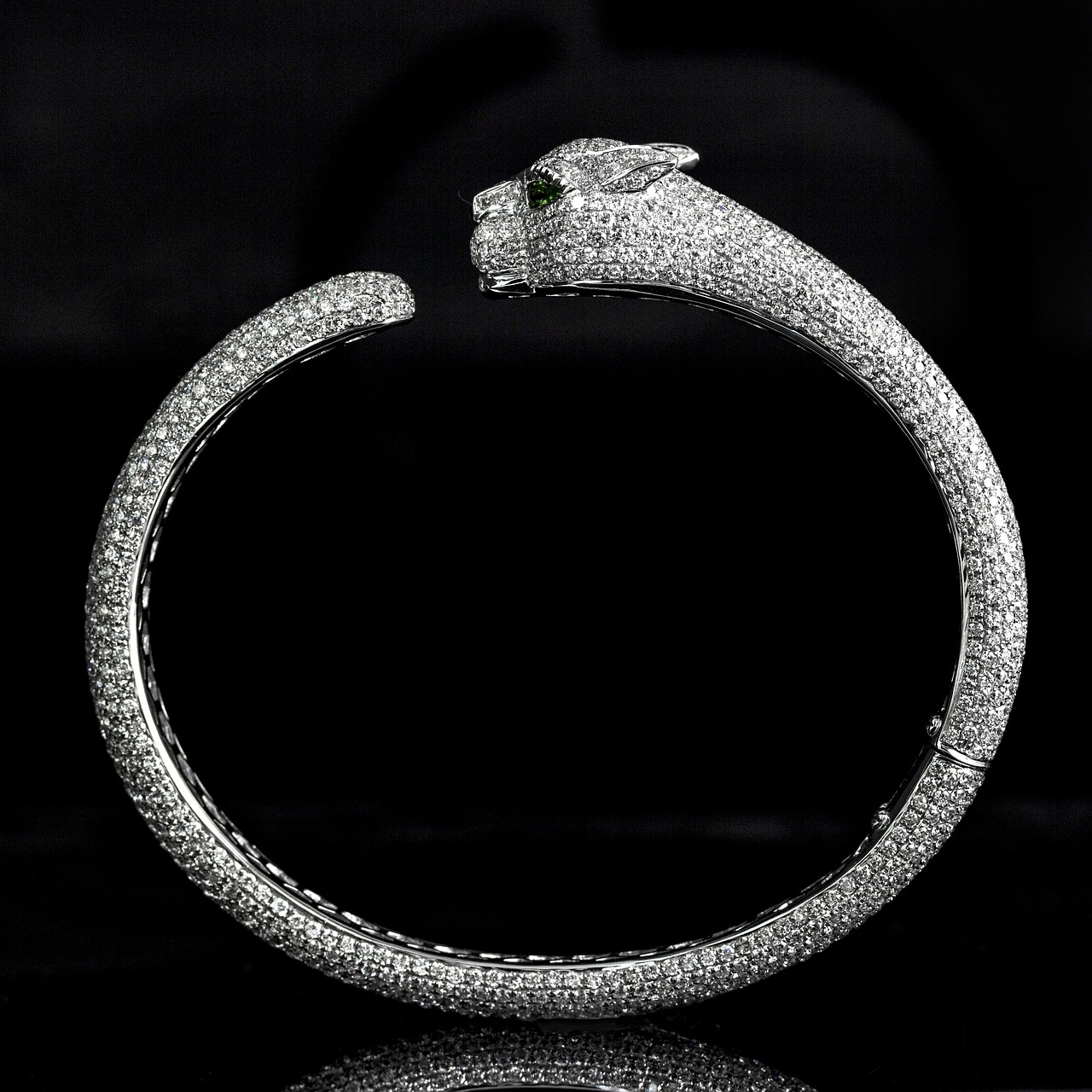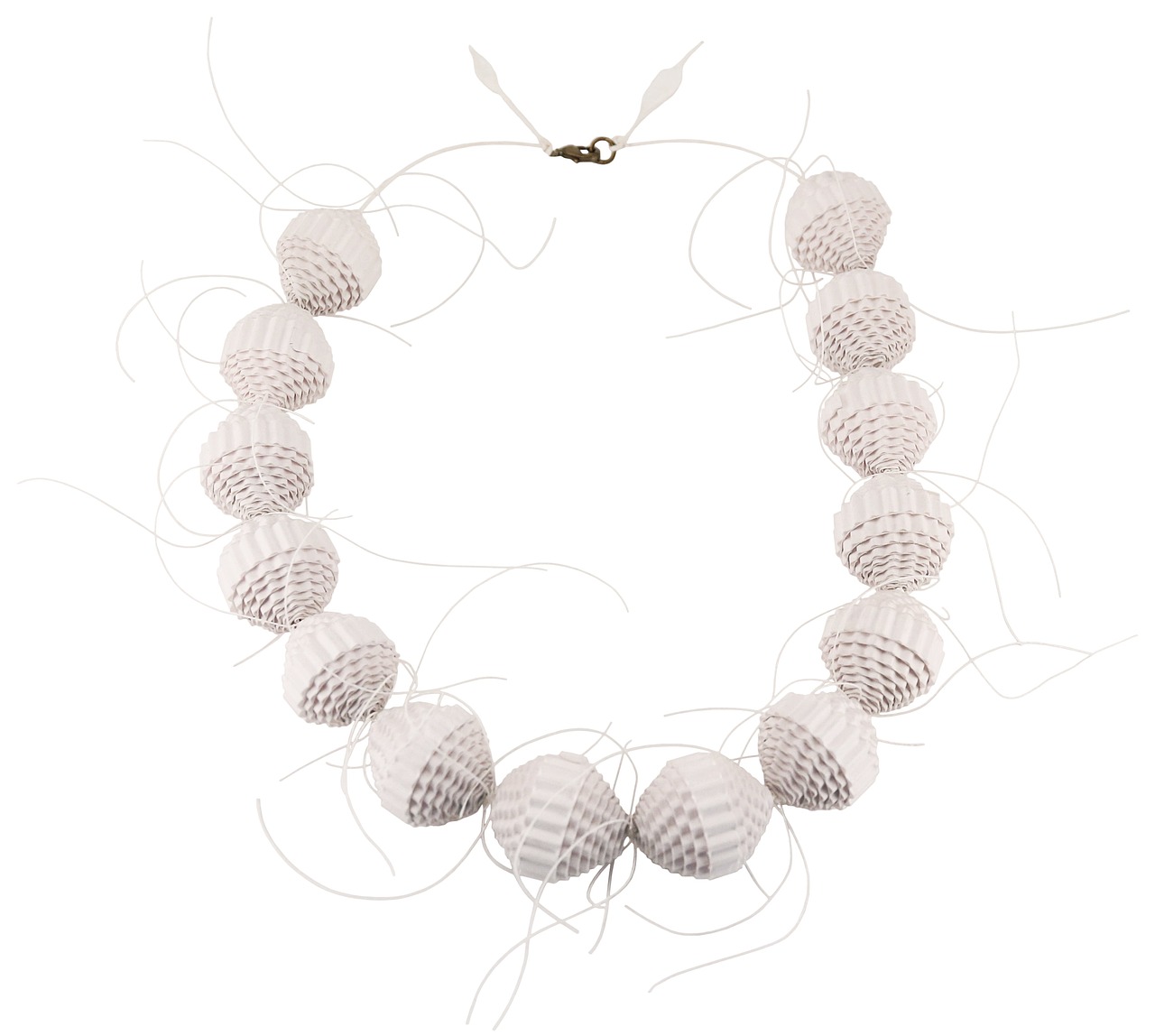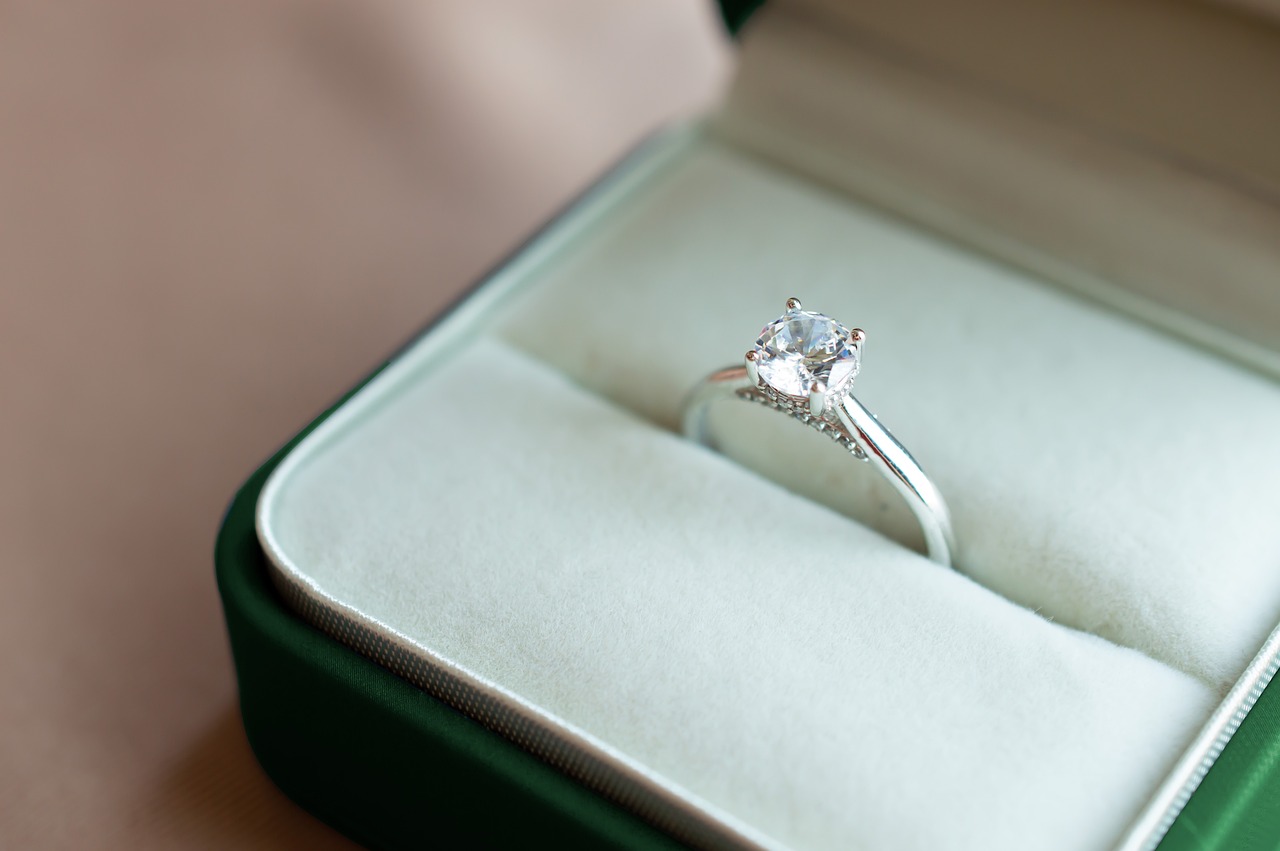This article delves into the rich history and significance of signet rings, detailing their evolution, cultural importance, and modern interpretations. These unique pieces of jewelry have transcended time, serving not only as decorative items but also as symbols of authority and identity.
Signet rings are jewelry pieces traditionally featuring a unique emblem or design, often used to seal documents. They have a long-standing association with authority and identity. Historically, these rings were engraved with the owner’s insignia, making them a personal seal that authenticated documents and signified the owner’s presence.
The origins of signet rings can be traced back to ancient civilizations, including Egypt and Rome. Understanding their roots provides insight into their historical significance and evolution over time.
In ancient Egypt, signet rings were symbols of power, often used by pharaohs and officials to authenticate important documents. Their designs were deeply symbolic, reflecting the culture’s values.
Hieroglyphics often adorned these rings, serving as personal identifiers. This practice highlights the importance of written communication in ancient Egyptian society, emphasizing the connection between authority and literacy.
Ancient signet rings were typically crafted from precious metals and stones, signifying wealth and status. The choice of materials often reflected the wearer’s social standing and personal taste.
The Romans adopted signet rings, further popularizing them across Europe. They often featured intricate designs and were used by both men and women for personal and official purposes, showcasing the versatility of these rings.
Signet rings carry deep symbolism, often representing family heritage, authority, and personal identity. Their unique designs can convey messages about the wearer’s values and affiliations.
Many signet rings display family crests, serving as a way to honor lineage and tradition. This practice underscores the importance of ancestry in societal structures, making each ring a testament to family history.
Historically, signet rings have been associated with power and authority, often used by leaders and officials to endorse documents. This connection continues to resonate in modern contexts, where they symbolize trust and legitimacy.
Contemporary signet rings are crafted using advanced techniques while still honoring traditional methods. Understanding the manufacturing process reveals the artistry involved in creating these pieces.
Modern jewelers utilize a variety of materials, including gold, silver, and alternative metals. Techniques have evolved, incorporating technology while maintaining craftsmanship, allowing for intricate designs that appeal to diverse tastes.
Today’s signet rings often allow for customization, enabling wearers to engrave personal symbols or initials. This trend reflects a growing desire for individuality in jewelry, making each piece unique to its owner.
Despite their ancient origins, signet rings maintain relevance in modern fashion. Their use in personal expression and as heirlooms highlights their enduring appeal.
Signet rings have resurfaced in contemporary fashion, often worn as statement pieces. Their versatility allows them to complement various styles, from casual to formal, making them a popular choice among fashion enthusiasts.
Many families pass down signet rings through generations, making them cherished heirlooms. This practice emphasizes their sentimental value and connection to family history, ensuring that their legacy continues.
Choosing a signet ring involves considering personal style, material, and design. This section provides practical tips for selecting a ring that resonates with individual identity.
Identifying your personal style is crucial when selecting a signet ring. Consider how the ring will fit into your overall aesthetic and lifestyle, ensuring it reflects who you are.
The material of a signet ring affects its durability and appearance. Options range from traditional gold and silver to modern alternatives, each offering unique qualities that cater to different preferences.
The future of signet rings appears promising, with evolving designs and contemporary interpretations. This section explores potential trends and innovations in the world of signet rings.
As fashion continues to evolve, signet rings are likely to incorporate new designs and materials, appealing to younger generations while honoring tradition.
Popular culture influences jewelry trends, and signet rings are no exception. Their representation in media may shape public perception and desirability in the future, ensuring their place in fashion history.
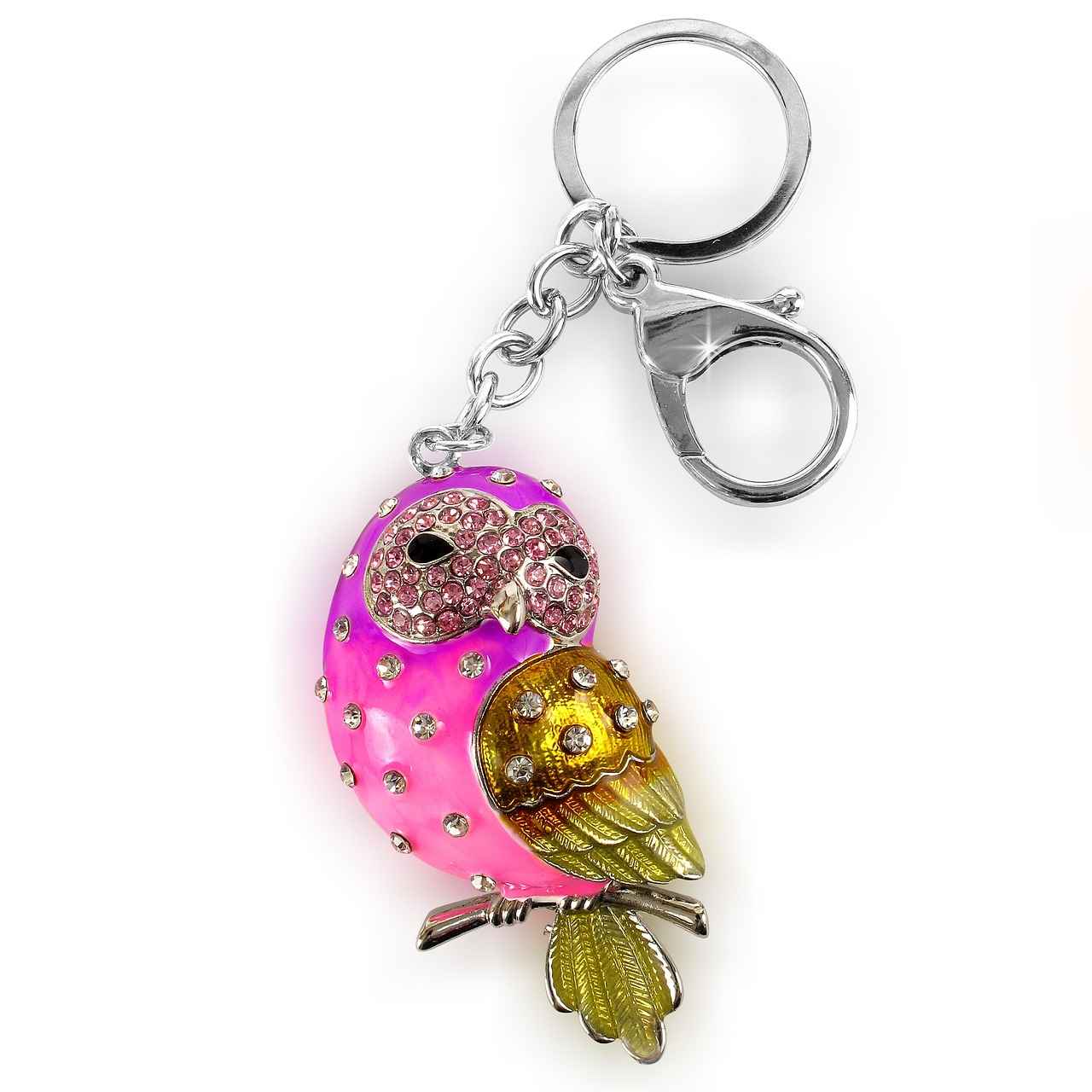
What Are Signet Rings?
Signet rings are fascinating pieces of jewelry that have captivated people for centuries. Traditionally, these rings feature a unique emblem or design, often serving as a personal seal for important documents. Their historical significance is deeply intertwined with themes of authority and identity, making them more than just decorative items.
At their core, signet rings are characterized by their distinctive designs, which can include family crests, initials, or other symbols that hold personal meaning. Historically, they were used to imprint a seal on wax, signifying authenticity and ownership. This practice dates back to ancient civilizations, where the ring served as a tool for communication and governance.
The significance of signet rings extends beyond mere aesthetics. They are often viewed as representations of family heritage and social status. In many cultures, wearing a signet ring can denote one’s lineage or affiliation with a particular group. For instance, in medieval Europe, the nobility commonly used signet rings to endorse legal documents, thereby cementing their authority.
Over the centuries, the design and purpose of signet rings have evolved. Initially made from materials like gold and silver, modern signet rings can now be crafted from a variety of metals, including platinum and even alternative materials like titanium. This evolution reflects changing tastes and the influence of contemporary fashion trends.
- Gold: A classic choice, symbolizing wealth and luxury.
- Silver: Offers a more understated elegance.
- Gemstones: Many modern rings incorporate precious stones, adding a pop of color and personal flair.
- Alternative Metals: Materials like titanium and stainless steel are popular for their durability and modern appeal.
Modern craftsmanship has revolutionized the way signet rings are produced. Advanced techniques such as laser engraving allow for intricate designs that were once impossible to achieve. Additionally, many jewelers now offer customization options, enabling individuals to create a unique piece that resonates with their personal identity.
Absolutely! Signet rings have made a significant comeback in contemporary fashion. They are often worn as statement pieces, adding a touch of individuality to any outfit. Many celebrities and fashion influencers showcase their signet rings, further solidifying their place in modern jewelry trends.
Selecting the perfect signet ring involves considering various factors:
- Personal Style: Reflect on how the ring will complement your wardrobe.
- Material: Choose a metal that fits your lifestyle and aesthetic.
- Design: Decide whether you prefer a classic family crest or a more modern, abstract design.
In summary, signet rings are not just relics of the past; they are timeless symbols of identity and authority that continue to hold significant meaning in today’s world. Their evolution from ancient seals to modern fashion statements showcases their enduring appeal and versatility.

Where Did Signet Rings Originate?
Signet rings have a storied past that intertwines with the histories of various ancient civilizations. Their origins can be traced back thousands of years, revealing a fascinating journey that reflects the evolution of culture, power, and personal identity. Understanding the roots of signet rings not only sheds light on their historical significance but also highlights their enduring appeal through the ages.
The origins of signet rings can be traced back to ancient Mesopotamia around 3500 BC, where they were used as a form of personal identification. These early rings were often engraved with unique symbols or images, which served as a signature for the owner. Such practices laid the groundwork for the use of signet rings in subsequent civilizations.
In ancient Egypt, signet rings held immense cultural significance. Pharaohs and officials utilized these rings to authenticate important documents, symbolizing power and authority. The designs often featured intricate hieroglyphics, which served as personal identifiers, showcasing the importance of written communication in Egyptian society.
Crafted primarily from precious metals like gold and silver, ancient signet rings were adorned with stones such as lapis lazuli and turquoise. These materials not only signified wealth and status but also reflected the artistry and skill of the jewelers of the time. The choice of materials often indicated the social standing of the wearer, further emphasizing the ring’s importance.
The Romans adopted and adapted the use of signet rings, further popularizing them across Europe. Roman signet rings often featured elaborate designs and were used by both men and women for personal and official purposes. They became symbols of status, with many individuals commissioning rings that displayed family crests or personal emblems.
As we move through history, signet rings have adapted to the changing cultural landscapes. In the Middle Ages, they became essential tools for nobles and clergy, used to seal letters and documents. This practice reinforced the connection between signet rings and authority, a trend that persists even in modern times.
Today, signet rings continue to hold significance, not only as symbols of power but also as fashionable accessories. Contemporary jewelers honor traditional designs while incorporating modern techniques and materials. Customization has become a popular trend, allowing individuals to engrave personal symbols or initials, thus reflecting their unique identities.
The relevance of signet rings in today’s fashion scene cannot be overstated. They serve as powerful statements of identity and heritage, often passed down through generations as cherished heirlooms. The resurgence of interest in vintage and personalized jewelry has further solidified their place in modern culture.
Understanding the origins and evolution of signet rings provides valuable insight into their historical significance and cultural importance. From ancient civilizations to contemporary fashion, signet rings have transcended time, adapting to the needs and values of each era while retaining their core essence as symbols of identity and authority.
Ancient Egypt and Signet Rings
In the realm of ancient Egypt, signet rings held a profound significance that extended far beyond mere adornment. These exquisite pieces of jewelry were not only symbols of power and authority but also vital tools in the administration of the state. Used predominantly by pharaohs, officials, and the elite, signet rings served as essential instruments for authenticating important documents and decrees, thereby solidifying the wearer’s status within the hierarchical structure of Egyptian society.
The design of these rings was often intricate, featuring hieroglyphics and symbolic motifs that conveyed messages about the wearer’s identity and rank. Each ring was uniquely crafted to represent the individual’s personal or familial insignia, emphasizing the importance of identity in a society where social standing and lineage were paramount. The use of these rings can be seen as a reflection of the cultural values of ancient Egypt, where the divine right of kings and the legitimacy of governance were intricately tied to one’s ability to communicate authority through symbols.
Moreover, the materials used in the creation of signet rings were equally telling. Crafted from precious metals such as gold and silver, these rings symbolized wealth and prestige. In some cases, they were adorned with gemstones that further enhanced their visual appeal and signified the wearer’s elite status. The choice of materials was not arbitrary; it often indicated the social hierarchy and the wearer’s place within it. For instance, a pharaoh’s ring would typically feature more elaborate designs and the finest materials compared to those of lesser officials.
As we delve deeper into the role of signet rings in ancient Egyptian culture, it becomes clear that they were more than just functional items. They were potent symbols of authority and served as a means of personal expression. The act of sealing a document with a signet ring was a powerful statement, as it not only authenticated the document but also conveyed the weight of the authority behind it. This practice underscores the significance of written communication in ancient Egyptian society, where the written word was revered and considered sacred.
In addition to their practical uses, signet rings also played a role in religious and ceremonial contexts. Many rings featured deities or religious symbols, reinforcing the connection between the wearer and the divine. This duality of function—both practical and spiritual—highlights the multifaceted nature of signet rings in ancient Egypt.
In conclusion, the history of signet rings in ancient Egypt is a fascinating exploration of power, identity, and cultural values. These rings were not merely decorative items; they were essential tools of governance and personal expression, deeply embedded in the social and political fabric of the time. As we reflect on their significance, it is evident that signet rings continue to captivate our imagination, serving as enduring symbols of authority and tradition.
The Role of Hieroglyphics
in Ancient Signet Rings
In the fascinating world of ancient Egypt, hieroglyphics played a crucial role in communication and record-keeping. These intricate symbols were not merely decorative; they served significant functions, especially when engraved on signet rings. The use of hieroglyphics on these rings underscores their importance as personal identifiers in a society that placed high value on written communication.
Signet rings in ancient Egypt were often adorned with unique hieroglyphic inscriptions that conveyed the identity of the wearer. These inscriptions could include the name of the owner, titles, or even religious symbols that reflected their beliefs and status. The presence of such inscriptions transformed these rings into more than just decorative pieces; they became powerful symbols of authority and personal identity.
Why Were Hieroglyphics Important?
- Personal Identification: In a society where literacy was limited to a select few, hieroglyphics provided a way for individuals to assert their identity. The engraved symbols on signet rings served as a personal signature, validating documents and affirming the owner’s authority.
- Cultural Significance: The choice of symbols often reflected the cultural and religious beliefs of the time. For instance, an ankh symbol might signify life, while a scarab could represent rebirth. These choices added layers of meaning to the rings.
- Legal and Administrative Functions: Signet rings were used to seal important documents, making the hieroglyphics not just ornamental but also functional. The act of sealing a document with a signet ring indicated authenticity and intent, playing a vital role in the administration of the state.
The Artistry Behind Hieroglyphics
The craftsmanship involved in engraving hieroglyphics on signet rings is a testament to the skill of ancient artisans. Each symbol required precision and artistry, often taking considerable time to create. The rings themselves were typically made from precious metals like gold or silver, enhancing their value and significance. As a result, these rings were not only personal identifiers but also status symbols, reflecting the wealth and power of their owners.
Legacy of Hieroglyphics in Modern Context
The legacy of hieroglyphics extends beyond ancient Egypt; their influence can still be seen in modern jewelry design. Contemporary signet rings sometimes incorporate symbolic engravings, allowing wearers to express their identity and values similarly to their ancient counterparts. This connection to history enriches the meaning of these modern pieces, reminding us of the enduring significance of personal expression through jewelry.
In conclusion, the role of hieroglyphics in ancient signet rings highlights the profound impact of written communication in Egyptian society. These symbols were not merely decorative; they were essential components of identity, authority, and culture. The artistry involved in their creation and the meanings behind them continue to resonate, reminding us that the stories of the past are woven into the very fabric of our present.
Materials Used in Ancient Signet Rings
The played a crucial role in defining their significance and value. These rings were not merely decorative items; they were powerful symbols of wealth, status, and identity. Understanding the materials used in their creation provides insight into the social hierarchies of ancient civilizations.
Ancient signet rings were primarily crafted from precious metals such as gold, silver, and bronze. Each metal had its own connotations:
- Gold: Often associated with the divine and royalty, gold signet rings signified the highest status. They were frequently used by kings and high-ranking officials.
- Silver: While still valuable, silver signet rings were more accessible and commonly worn by the affluent class. They represented wealth but were not as exclusive as gold.
- Bronze: This metal was often used for signet rings among the lower classes. It was durable and affordable, making it a practical choice for everyday wear.
In addition to metals, gemstones played a vital role in the aesthetic appeal and symbolism of signet rings. Some common stones included:
- Onyx: This black stone was favored for its elegance and strength, often engraved with intricate designs.
- Carnelian: Known for its vibrant reddish hue, carnelian was believed to offer protection and was often used in seals.
- Amethyst: Valued for its royal purple color, amethyst was associated with wisdom and was frequently used by those in power.
The choice of materials in signet rings was a direct reflection of the wearer’s social status. Those of higher rank could afford rings made of gold and adorned with precious stones, while the less affluent had to settle for simpler designs made from bronze or lower-quality materials. This practice not only indicated wealth but also reinforced the social structure of the time.
Beyond their monetary value, the materials used in ancient signet rings held deep cultural significance. For instance:
- Gold: Often associated with the sun and divinity, gold was believed to possess magical properties, enhancing the power of the wearer.
- Silver: Seen as a symbol of the moon, silver was linked to intuition and emotional balance, making it a popular choice among leaders.
- Gemstones: Each gemstone was thought to carry specific energies and meanings, influencing the wearer’s fate and identity.
In modern times, the fascination with ancient materials continues to influence jewelry design. Contemporary artisans often draw inspiration from the past, utilizing similar metals and stones to create signet rings that resonate with history while appealing to modern aesthetics.
In conclusion, the were not just a matter of preference; they were deeply intertwined with the values and hierarchies of their time. By examining these materials, we gain a better understanding of the cultural and social dynamics that shaped ancient societies.
The Roman Influence on Signet Rings
The story of signet rings is incomplete without acknowledging the profound impact of the Romans. As the Roman Empire expanded, so did the popularity of these unique pieces of jewelry, which became symbols of status and authority across Europe. The Romans not only adopted signet rings from earlier civilizations but also enhanced their design and functionality, making them integral to both personal and official matters.
What Made Roman Signet Rings Unique?
Roman signet rings were characterized by their intricate designs, often featuring mythological figures, animals, or even family crests. These designs were meticulously carved into the stone or metal, allowing the wearer to leave a distinct seal when pressing the ring into wax. This functionality was crucial for authenticating documents, thus linking the ring to the concept of identity and authority.
Who Wore Signet Rings in Ancient Rome?
Both men and women in ancient Rome wore signet rings. For men, these rings were often a mark of status, while women used them not only for sealing letters but also as decorative accessories. The rings were typically worn on the pinky finger, a choice that allowed for ease of use while maintaining a sense of elegance.
How Did the Romans Use Signet Rings?
- Official Documents: Roman officials frequently used signet rings to authenticate letters and decrees, ensuring that the contents were legitimate and traceable back to the sender.
- Personal Correspondence: Individuals used their rings to seal personal letters, adding a touch of intimacy and formality to their communications.
- Social Status: The intricacy of the design often indicated the wearer’s wealth and social standing, making these rings not just functional but also a statement of power.
Materials and Craftsmanship
Roman signet rings were crafted from a variety of materials, including gold, silver, and gemstones. The choice of material often signified the owner’s wealth and taste. Gold rings, for instance, were particularly prestigious and often featured elaborate designs that showcased the skill of the artisan. The craftsmanship involved in creating these rings was highly regarded, with skilled jewelers dedicating years to perfecting their art.
The Legacy of Roman Signet Rings
The influence of Roman signet rings extends far beyond their time. As the Empire fell and Europe entered the Middle Ages, the tradition of using signet rings continued, evolving into various forms across different cultures. Today, signet rings remain popular, often customized to reflect personal values or family heritage. Their historical significance as symbols of authority and identity has ensured their place in modern jewelry.
Are Signet Rings Still Relevant in Modern Culture?
In contemporary society, signet rings have made a resurgence, often seen as fashionable accessories that carry personal significance. Many people choose to engrave their initials or family crests, creating a modern interpretation of an ancient tradition. This revival not only highlights the enduring appeal of signet rings but also emphasizes their role as a bridge between history and personal expression.
In summary, the Roman influence on signet rings is a testament to their lasting significance in jewelry history. From their intricate designs to their multifunctional use, these rings have evolved while maintaining their core symbolism of identity, authority, and heritage.
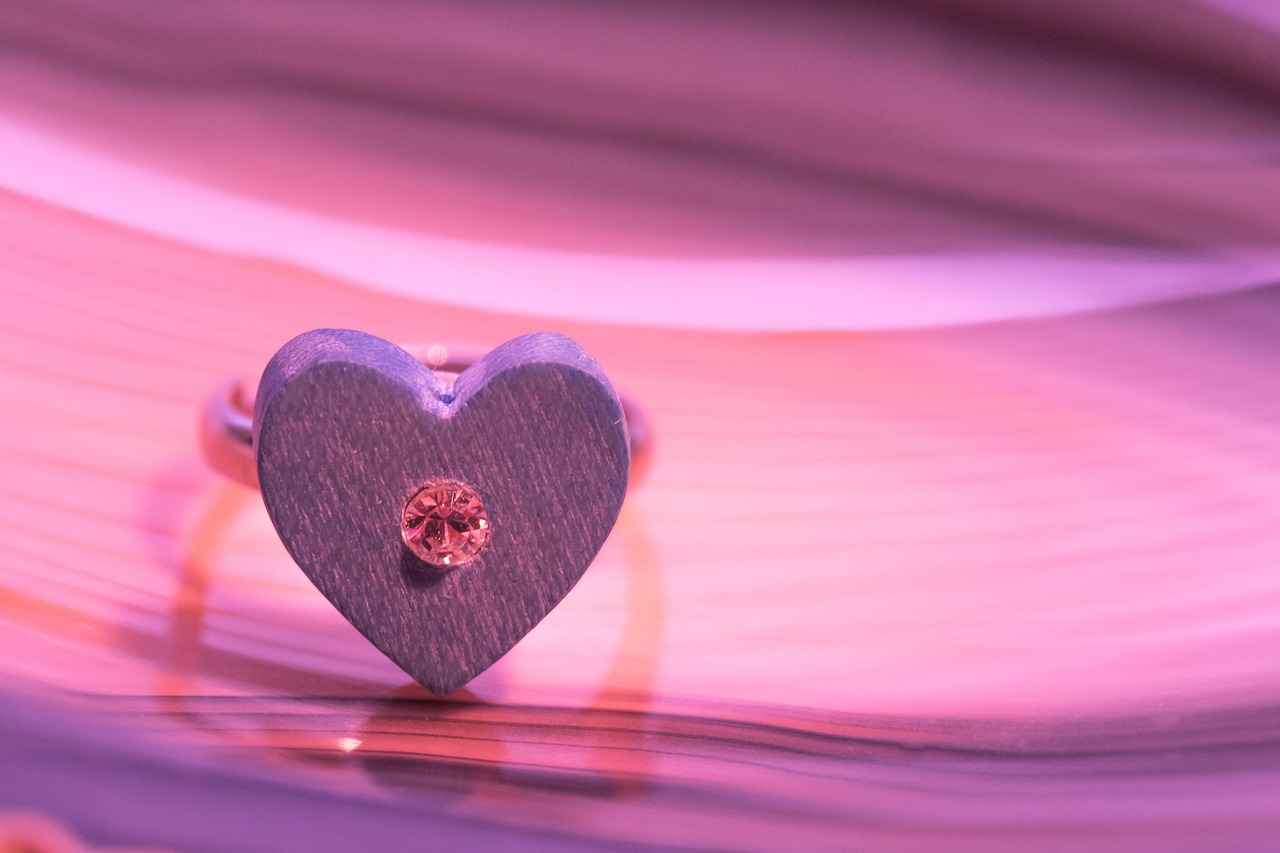
What Is the Symbolism Behind Signet Rings?
Signet rings have long been associated with deep symbolism, serving as powerful representations of family heritage, authority, and personal identity. Their unique designs and inscriptions often convey messages about the wearer’s values and affiliations, making them more than just pieces of jewelry.
The symbolism behind signet rings is rich and multifaceted. Historically, these rings were not merely decorative but served practical purposes, such as sealing documents and authenticating important correspondence. This practice imbued them with a sense of authority and power, often associated with nobility and leadership.
One of the most profound meanings of signet rings lies in their connection to family heritage. Many rings feature intricate designs that reflect family crests or emblems, symbolizing lineage and tradition. This practice emphasizes the importance of ancestry, allowing wearers to honor their familial roots and maintain a connection to their past.
Throughout history, signet rings have been used by leaders and officials as a mark of their authority. The act of sealing a document with a signet ring was a powerful statement of endorsement, signifying the legitimacy of the content. This historical context continues to resonate today, as many individuals choose to wear signet rings as a symbol of their own personal or professional authority.
In addition to their historical significance, signet rings have evolved into expressions of personal identity. Modern wearers often customize their rings with initials, symbols, or meaningful designs that reflect their unique values and beliefs. This personalization allows individuals to convey their identity and affiliations in a tangible form.
- Tradition: By wearing a family crest, individuals celebrate their heritage and the values passed down through generations.
- Power: A signet ring can symbolize a position of influence, whether in a personal or professional context.
- Individuality: Custom designs and engravings enable wearers to express their unique stories and beliefs.
Across various cultures, signet rings have held significant meaning. In some societies, they are viewed as status symbols, while in others, they serve as protective talismans. The cultural impact of these rings reflects the diverse ways in which they resonate with personal and collective identities.
Despite their ancient origins, signet rings remain relevant in contemporary society. They are often seen as fashionable accessories that carry a sense of history and tradition. The resurgence of interest in vintage and heirloom jewelry has further solidified their place in modern fashion, allowing new generations to connect with the past.
In summary, the symbolism behind signet rings is deeply rooted in family heritage, authority, and personal identity. Their unique designs and the messages they convey make them significant pieces of jewelry that transcend mere adornment. As they continue to evolve, signet rings will undoubtedly maintain their relevance, serving as powerful symbols of who we are and where we come from.
Family Crests and Heritage
Signet rings have long served as powerful symbols of family heritage and tradition. One of the most notable features of these rings is their ability to display family crests, which are intricate designs that represent a family’s unique identity and lineage. This practice not only honors ancestry but also reinforces the significance of familial connections within societal structures.
Family crests are more than just decorative designs; they encapsulate a family’s history, values, and achievements. Often passed down through generations, these crests serve as a reminder of one’s roots and the legacy of those who came before. The use of signet rings to display these crests is a tradition that dates back to ancient times, emphasizing the importance of lineage and the pride families take in their heritage.
Signet rings featuring family crests act as a tangible representation of a family’s story. Each design is unique, often incorporating elements that reflect significant events, occupations, or virtues associated with the family. For instance, a family crest might include symbols of courage, wisdom, or loyalty, which not only tell a story but also serve as guiding principles for future generations.
Throughout history, signet rings have been associated with authority and status. In many cultures, possessing a signet ring adorned with a family crest signified one’s place in the social hierarchy. These rings were often used to seal important documents, making them an essential tool for those in power. Today, while the practical use of signet rings has diminished, their symbolic weight remains. They continue to represent family legacy and the enduring connection to one’s ancestry.
In contemporary society, the significance of family crests on signet rings has evolved. Many individuals choose to incorporate their family crest into modern designs, blending traditional symbolism with contemporary aesthetics. This fusion allows wearers to express their identity while honoring their heritage. Customization options have made it easier than ever for individuals to create a signet ring that reflects their personal story and family values.
- Research Your Family History: Before selecting a signet ring, it’s essential to understand your family’s crest and its meaning. This knowledge will help you choose a design that resonates with your identity.
- Consider Material and Design: The material of the ring can affect its appearance and durability. Options like gold, silver, and platinum are popular, but modern alternatives also exist.
- Personalization: Many jewelers offer customization, allowing you to engrave initials or additional symbols alongside the family crest, making the ring uniquely yours.
Beyond their physical attributes, signet rings hold immense emotional value. They often serve as family heirlooms, passed down from one generation to the next. This practice fosters a sense of belonging and continuity, reminding wearers of their family’s journey and the values that have been instilled in them. Wearing a signet ring adorned with a family crest can evoke feelings of pride and connection, making it a cherished piece of jewelry.
In conclusion, the tradition of using signet rings to display family crests is a profound practice that honors lineage and heritage. These rings not only symbolize a family’s history but also serve as a reminder of the values and principles that define them. As society continues to evolve, the significance of signet rings remains strong, bridging the past with the present and ensuring that family legacies endure.
Authority and Power
Throughout history, signet rings have served as powerful symbols of authority and power. These ornate pieces of jewelry have transcended time, evolving from mere decorative items to essential tools for leaders and officials. Their historical significance is deeply rooted in their use for endorsing documents, a practice that underscores their connection to governance and legitimacy.
Signet rings are distinctively marked with a unique emblem or design, often reflecting the identity of the wearer. Historically, these rings were used to seal important documents, serving as a personal signature that verified authenticity. The act of pressing a signet ring into wax not only secured the document but also conveyed the authority of the individual behind it. This practice has been prevalent across various cultures, from ancient Egypt to medieval Europe, highlighting the ring’s role as a symbol of power.
The evolution of signet rings is closely tied to the development of political and social structures. In ancient civilizations, such as Egypt and Rome, these rings were often worn by pharaohs and emperors, signifying their supreme authority. As societies progressed, the use of signet rings expanded beyond royalty to include nobility and influential merchants, further embedding the rings within the fabric of societal hierarchy.
In many cultures, signet rings are more than just symbols of power; they represent heritage and family legacy. Many families have passed down signet rings through generations, imbuing them with sentimental value. These rings often bear family crests, which serve as a reminder of the lineage and traditions that shape an individual’s identity.
Despite their ancient origins, signet rings continue to resonate in contemporary society. They are increasingly seen as fashion statements while retaining their historical significance. Modern interpretations of signet rings often allow for personalization, enabling individuals to express their unique identities while honoring tradition.
In today’s world, the significance of signet rings has expanded to include personal empowerment. Many individuals choose to wear signet rings as a way to assert their individuality and values. The ability to customize these rings has made them popular among younger generations, who seek to blend tradition with modernity.
People continue to choose signet rings for various reasons. Their timeless appeal and versatile designs make them suitable for both formal and casual occasions. Moreover, the emotional connection associated with heirloom signet rings adds to their allure. They are not merely accessories; they are tangible links to the past, embodying stories and legacies.
The future of signet rings looks promising as they adapt to changing fashion trends. Innovations in design and materials are likely to attract a broader audience. As younger generations seek to connect with their heritage while embracing modern aesthetics, signet rings may evolve into even more personalized and meaningful pieces.
In summary, the historical and cultural significance of signet rings as symbols of authority and power remains relevant today. Their ability to combine tradition with contemporary style ensures that they will continue to be cherished by individuals seeking to express their identity and heritage.
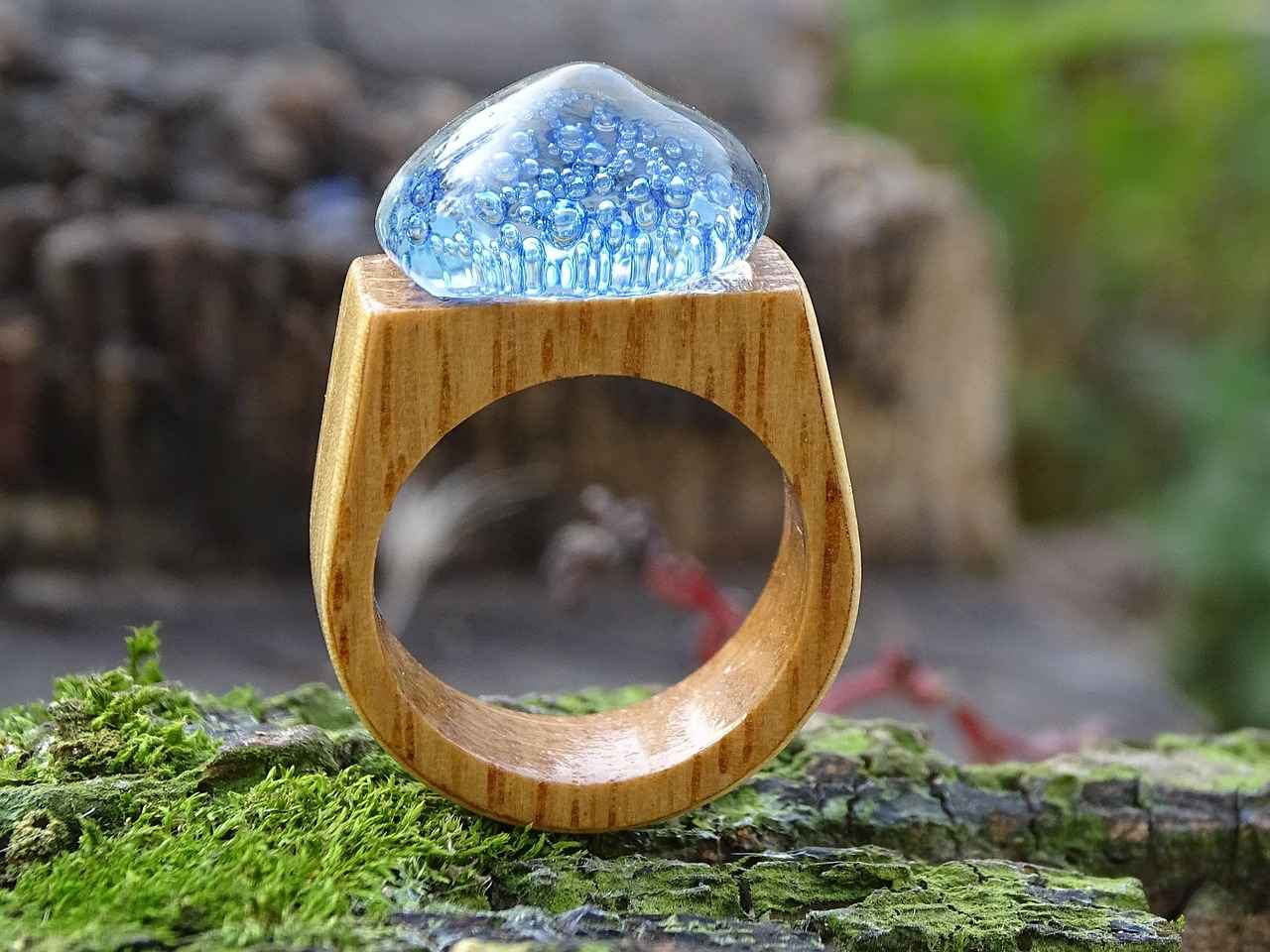
How Are Signet Rings Made Today?
In the realm of jewelry, signet rings hold a special place, embodying both tradition and modern artistry. This question unveils a fascinating blend of advanced techniques and time-honored craftsmanship, resulting in unique pieces that resonate with personal significance.
Contemporary signet rings are crafted using a variety of advanced techniques that enhance precision and creativity. Modern jewelers employ methods such as computer-aided design (CAD) to create intricate designs that were once impossible to achieve. This technology allows for detailed visualizations and adjustments before the actual crafting begins, ensuring that every aspect meets the wearer’s expectations.
While technology plays a significant role, the essence of traditional craftsmanship remains at the heart of signet ring creation. Skilled artisans often handcraft these rings, employing techniques passed down through generations. This combination of modern and traditional methods results in pieces that not only look stunning but also carry a story of their own.
The choice of materials is crucial in the creation of signet rings. Modern jewelers utilize a range of materials, including:
- Gold: Available in various karats and colors, gold remains a popular choice due to its durability and timeless appeal.
- Silver: Often more affordable, silver offers a sleek appearance and can be easily engraved.
- Alternative Metals: Materials like titanium and stainless steel are gaining popularity for their strength and modern aesthetic.
Each material brings its own unique qualities, allowing wearers to choose based on personal style and significance.
One of the most exciting aspects of modern signet rings is the ability for customization. Many jewelers offer options for engraving personal symbols, initials, or family crests, allowing individuals to create a piece that truly reflects their identity. This trend towards personalization highlights a growing desire for jewelry that tells a story, making each ring a unique representation of the wearer.
Quality control is paramount in the manufacturing process. After crafting, each signet ring undergoes rigorous inspections to ensure it meets high standards of quality and durability. The final touches often include polishing and finishing, enhancing the ring’s overall appearance and ensuring it shines brightly for years to come.
The manufacturing process of contemporary signet rings is a remarkable blend of artistry and technology. By understanding how these pieces are made, one can appreciate the skill and dedication that goes into each ring. From the initial design phase to the final product, every step is infused with creativity and craftsmanship, resulting in a piece that is not only beautiful but also rich in meaning.
In conclusion, the evolution of signet rings showcases the balance between tradition and innovation, allowing for the creation of stunning jewelry that resonates with personal significance. Whether worn as a fashion statement or a cherished heirloom, modern signet rings continue to captivate and inspire.
Materials and Techniques in Modern Crafting
In today’s world of jewelry making, the craftsmanship involved in creating signet rings has evolved significantly. Modern jewelers are not only skilled artisans but also innovators who embrace a diverse range of materials and techniques. This article delves into the various materials used in crafting signet rings and the advanced techniques that have transformed the industry.
What Materials Are Used in Modern Signet Rings?
- Gold: A timeless classic, gold remains a popular choice for signet rings. Available in various karats, its rich color and malleability allow for intricate designs.
- Silver: Known for its affordability and lustrous finish, silver is frequently used in signet rings. It can be easily engraved and polished, making it a favorite among modern jewelers.
- Alternative Metals: With the rise of contemporary jewelry, alternative metals such as titanium, tungsten, and stainless steel have gained popularity. These materials offer unique aesthetics and durability, appealing to a younger audience.
- Gemstones: Incorporating gemstones into signet rings adds a personal touch. From sapphires to onyx, these stones can symbolize personal values or heritage.
How Have Techniques Evolved?
Modern crafting techniques have transformed the way signet rings are made. Traditional methods still play a role, but the integration of technology has enhanced precision and creativity.
- 3D Printing: This innovative technology allows jewelers to create complex designs that were previously impossible to achieve. It enables rapid prototyping and customization, catering to individual preferences.
- Laser Engraving: Laser technology has revolutionized the engraving process, allowing for intricate details and personalized messages to be etched onto rings with exceptional accuracy.
- CAD Design: Computer-Aided Design (CAD) software enables jewelers to visualize and modify their creations before they are produced. This technology enhances collaboration between designers and clients, ensuring that the final product meets expectations.
Why Is Craftsmanship Important?
Despite the technological advancements, the artistry of craftsmanship remains at the heart of signet ring production. Skilled artisans combine their expertise with modern techniques to create pieces that are not only beautiful but also meaningful. The attention to detail and quality assurance in craftsmanship ensures that each ring is a unique representation of the wearer’s identity.
Customization and Personalization
Today’s consumers seek individuality, and many jewelers offer customization options for signet rings. This trend allows wearers to engrave initials, family crests, or personal symbols, making each piece a unique statement of identity. The ability to personalize a ring adds sentimental value, transforming it into a cherished heirloom.
What Are the Benefits of Modern Materials?
The use of modern materials in signet rings provides several advantages:
- Durability: Alternative metals like titanium and tungsten are highly resistant to scratches and wear, making them ideal for everyday use.
- Affordability: With a variety of materials available, customers can find options that fit their budget without sacrificing style.
- Versatility: The wide range of materials allows for diverse designs, catering to different tastes and preferences.
In conclusion, the world of modern signet rings is a blend of traditional craftsmanship and innovative techniques. As jewelers continue to explore new materials and technologies, the possibilities for customization and personalization are endless. This evolution not only preserves the significance of signet rings but also ensures their relevance in contemporary fashion.
Customization and Personalization
In the world of jewelry, signet rings have long held a special place, symbolizing authority, identity, and heritage. However, as fashion evolves, so does the way we perceive and wear these timeless pieces. One of the most exciting trends in contemporary jewelry is the of signet rings, allowing individuals to express their unique identity through this classic accessory.
Customization in jewelry is not just a trend but a reflection of our desire for individuality. Consumers today are increasingly seeking pieces that resonate with their personal stories and values. Custom signet rings offer a unique opportunity to engrave personal symbols, initials, or even meaningful dates, making each piece a one-of-a-kind treasure.
- Engravings: The most common form of customization, engravings can include initials, family crests, or symbols that hold personal significance.
- Choice of Materials: Modern jewelers offer various materials, from classic gold and silver to contemporary options like titanium or even wood, allowing further personalization.
- Stone Inlays: Adding gemstones or colored stones can enhance the beauty of a signet ring, making it truly unique.
- Design Shapes: While traditional signet rings have a specific shape, many jewelers now offer custom designs that can alter the ring’s silhouette to match personal taste.
When wearers choose to customize their signet rings, they are often expressing their personal narratives. For example, someone might engrave a symbol that represents their heritage or a personal mantra that guides them. This act of personalization transforms the ring from a mere accessory into a powerful emblem of one’s identity and values.
Absolutely! Custom signet rings cater to a wide range of demographics. From young adults looking for a unique piece to commemorate a milestone, to older generations wanting to honor family traditions, these rings can be tailored to suit anyone’s style and story. They also make for thoughtful gifts for special occasions, such as graduations, weddings, or anniversaries.
When embarking on the journey of customizing a signet ring, there are a few key factors to keep in mind:
- Personal Style: Reflect on your style preferences. Do you lean towards classic elegance or modern minimalism? This will guide your design choices.
- Budget: Customization can vary significantly in price. Establishing a budget beforehand can help streamline your options.
- Jeweler’s Expertise: Choose a reputable jeweler who specializes in custom designs to ensure quality craftsmanship.
- Long-Term Appeal: Consider how the design will age over time. Opt for timeless elements that won’t feel outdated.
Once you have crafted your perfect signet ring, maintaining its integrity is essential. Regular cleaning, safe storage, and occasional professional inspections can help keep your ring looking its best. Additionally, being mindful of when to wear your ring—such as avoiding exposure to harsh chemicals or strenuous activities—will prolong its lifespan.
In conclusion, the trend of customization and personalization in signet rings offers a remarkable way for individuals to express their unique identities. By choosing to engrave personal symbols, selecting preferred materials, and considering various design options, wearers can create a piece that is not only beautiful but also deeply meaningful. As signet rings continue to evolve, their ability to reflect personal narratives ensures their place in the world of jewelry for years to come.
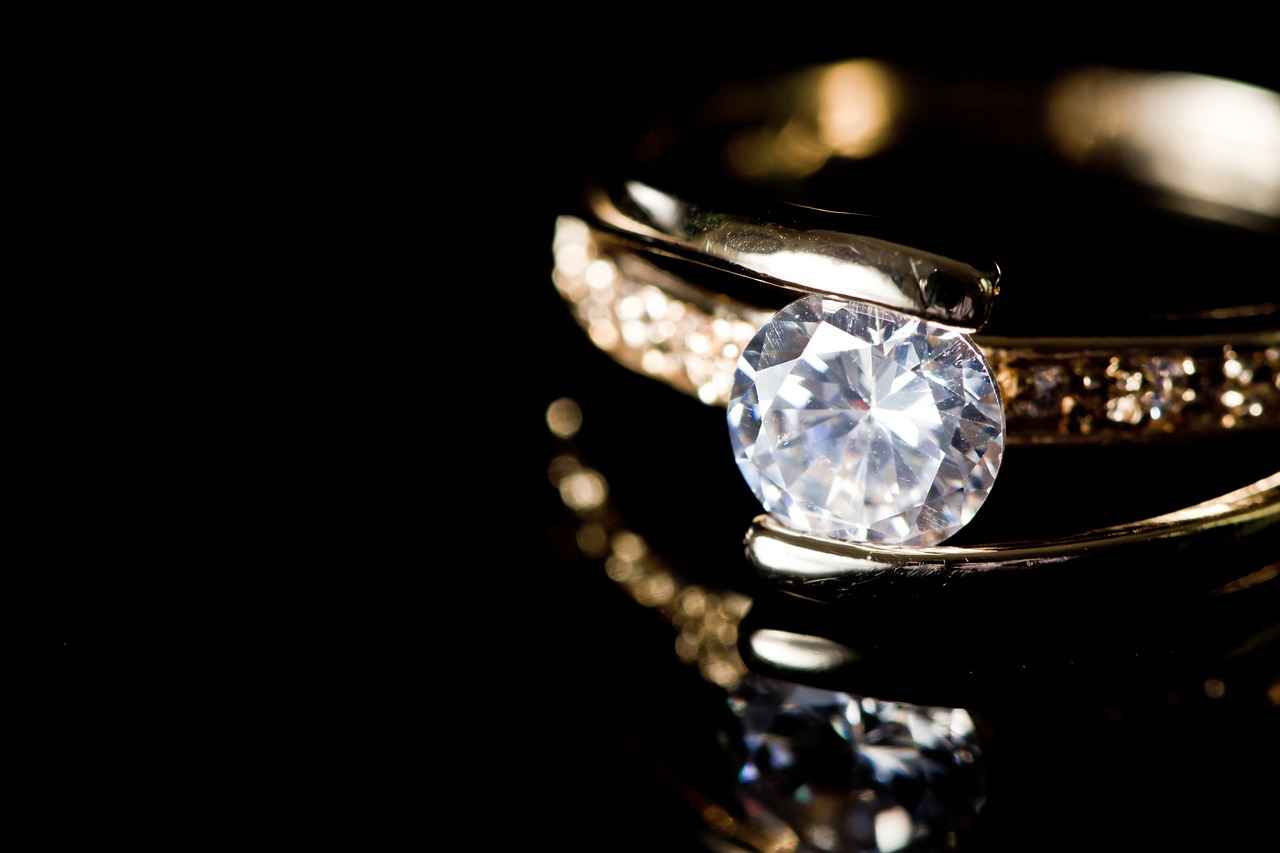
Are Signet Rings Still Relevant Today?
Despite originating in ancient civilizations, signet rings continue to hold a significant place in modern fashion. Their unique ability to blend tradition with contemporary aesthetics has made them a popular choice for individuals looking to express their identity and heritage. This article delves into the reasons why signet rings remain relevant today, focusing on their role in personal expression and their enduring status as cherished heirlooms.
In today’s world, signet rings are not merely decorative pieces; they serve as powerful symbols of personal identity. Many individuals choose to customize their rings with unique engravings, family crests, or personal symbols. This customization allows wearers to showcase their individuality and connect with their heritage in a meaningful way. The resurgence of personalized jewelry in recent years highlights a growing trend where people seek pieces that tell their stories.
Signet rings have made a significant comeback in the fashion industry, often seen on runways and in celebrity wardrobes. Their versatility makes them suitable for various occasions, from casual outings to formal events. Designers are now experimenting with innovative designs, materials, and finishes, ensuring that signet rings can be worn by anyone, regardless of their style. Whether it’s a classic gold finish or a modern twist with gemstones, these rings have become statement pieces that elevate any outfit.
One of the most compelling reasons for the ongoing relevance of signet rings is their status as heirlooms. Families often pass down these rings through generations, creating a tangible link to the past. Each ring carries its own story, often reflecting the history and values of the family it represents. This practice of inheritance not only preserves family legacies but also instills a sense of pride and belonging among descendants.
Historically, signet rings were symbols of authority, used by leaders and officials to seal important documents. This association with power and legitimacy continues to resonate today. Many modern professionals wear signet rings as a nod to their heritage or as a sign of their achievements. This connection to authority adds an extra layer of significance, making them appealing to those who wish to convey confidence and status.
When selecting a signet ring, consider your personal style and the message you want to convey. Think about the material you prefer, whether it’s traditional gold or silver, or perhaps a more contemporary metal. Additionally, contemplate the design and any engravings that resonate with you. A well-chosen signet ring can be a timeless addition to your jewelry collection, reflecting both your personality and your heritage.
The future of signet rings appears bright, with ongoing innovations in design and personalization. As fashion evolves, we can expect to see even more creative interpretations of this classic piece. The influence of popular culture and social media will likely continue to shape how signet rings are perceived and worn, ensuring their place in modern jewelry trends.
In summary, signet rings are far from obsolete; they are a dynamic blend of tradition and modernity. Their ability to serve as personal expressions, fashionable accessories, and treasured heirlooms ensures that they will remain relevant for generations to come.
Fashion Trends and Signet Rings
Signet rings have made a remarkable comeback in the realm of contemporary fashion, evolving from their historical roots into striking statement pieces that resonate with today’s style enthusiasts. These rings, traditionally associated with authority and identity, now serve a dual purpose: they are both a nod to heritage and a bold fashion statement.
The resurgence of signet rings in modern fashion can be attributed to their versatility and ability to complement a wide range of styles. Whether paired with casual attire or formal wear, signet rings add a touch of elegance and individuality. This adaptability makes them a favorite among fashion-forward individuals who seek to express their unique style.
Wearing a signet ring can significantly enhance personal style by serving as a conversation starter and a reflection of personal values. Many people opt for customized designs that incorporate initials, family crests, or meaningful symbols, making each piece unique. This trend towards personalization allows wearers to showcase their identity while adhering to contemporary fashion norms.
- Classic Designs: Many fashion enthusiasts prefer traditional signet rings with simple, elegant designs that exude sophistication.
- Modern Aesthetics: Sleek, minimalist styles are gaining traction, appealing to those who appreciate understated elegance.
- Bold and Artistic: Some opt for rings featuring intricate engravings or colorful gemstones, making a bold statement.
To maximize the impact of a signet ring, consider layering it with other rings or wearing it on a different finger than the traditional one. This creates a unique look that stands out. Additionally, pairing a signet ring with complementary jewelry, such as bracelets or necklaces, can enhance overall style without overwhelming the outfit.
Absolutely! Signet rings are increasingly recognized as gender-neutral accessories. Designers are crafting styles that appeal to all, allowing anyone to incorporate this timeless piece into their wardrobe. This shift reflects a broader trend in fashion that embraces inclusivity and individuality.
The enduring appeal of signet rings lies in their rich history and cultural significance. They symbolize heritage and identity, making them more than just a fashion accessory. Many families pass down signet rings through generations, imbuing them with sentimental value that transcends trends.
When selecting a signet ring, consider your personal style, the materials you prefer, and the design that resonates with you. It’s essential to choose a piece that not only complements your wardrobe but also reflects your personality. Whether you seek a classic gold ring or a modern piece with intricate details, the right signet ring can elevate your style.
In conclusion, signet rings have successfully transitioned from historical symbols of power to contemporary fashion staples. Their versatility, ability to be personalized, and broad appeal across genders make them a must-have accessory for anyone looking to make a statement. As fashion continues to evolve, signet rings will undoubtedly remain a cherished choice for those who value both style and significance.
Signet Rings as Heirlooms
Signet rings have long been cherished not only as symbols of authority and identity but also as precious family heirlooms. This tradition of passing down signet rings through generations highlights their sentimental value and the deep connections they foster within families. In this section, we will explore the significance of signet rings as heirlooms, their role in preserving family history, and the emotional ties they create.
The practice of passing down signet rings is rooted in the desire to maintain a tangible connection to one’s ancestry and family legacy. Each ring often carries a unique story, representing the values, achievements, and traditions of the family. When a signet ring is inherited, it serves as a reminder of the heritage and identity that has been cultivated over the years.
- Personalization: Many signet rings are engraved with family crests, initials, or unique designs that reflect the family’s history. This personalization adds a layer of meaning that is often irreplaceable.
- Historical Significance: The history behind each ring can be traced back to significant family events, such as weddings or accomplishments. These stories enrich the ring’s value beyond its material worth.
- Emotional Bonds: Wearing a family heirloom creates a sense of belonging and connection to past generations. It evokes memories of loved ones and serves as a symbol of unity.
Passing down signet rings fosters intergenerational connections. When a family member receives a signet ring, it often comes with stories and lessons shared by the previous owner. This act of inheritance can strengthen familial bonds and create a sense of responsibility to honor and preserve the family legacy.
Moreover, signet rings often become focal points during family gatherings, sparking conversations about ancestry and shared values. They serve as a reminder of the family’s journey through time, encouraging younger generations to appreciate their roots and maintain traditions.
To ensure that signet rings remain treasured family heirlooms, proper care is essential. Here are some practical tips:
- Regular Cleaning: Clean the ring gently with a soft cloth to maintain its shine and remove dirt.
- Safe Storage: When not being worn, store the ring in a protective box or pouch to prevent scratches and damage.
- Professional Maintenance: Consider having the ring professionally inspected and maintained every few years to address any wear and tear.
The emotional value of signet rings as heirlooms cannot be overstated. They symbolize family unity, continuity, and belonging. As they are passed down, they carry the essence of the family’s history and the love that binds its members together. For many, wearing a signet ring is not just about style; it is a way to honor their heritage and keep the memory of their ancestors alive.
In conclusion, signet rings are much more than mere pieces of jewelry. They are cherished heirlooms that encapsulate family history, emotional ties, and personal identity. By understanding their significance and taking steps to preserve them, families can ensure that these precious symbols continue to be valued by future generations.
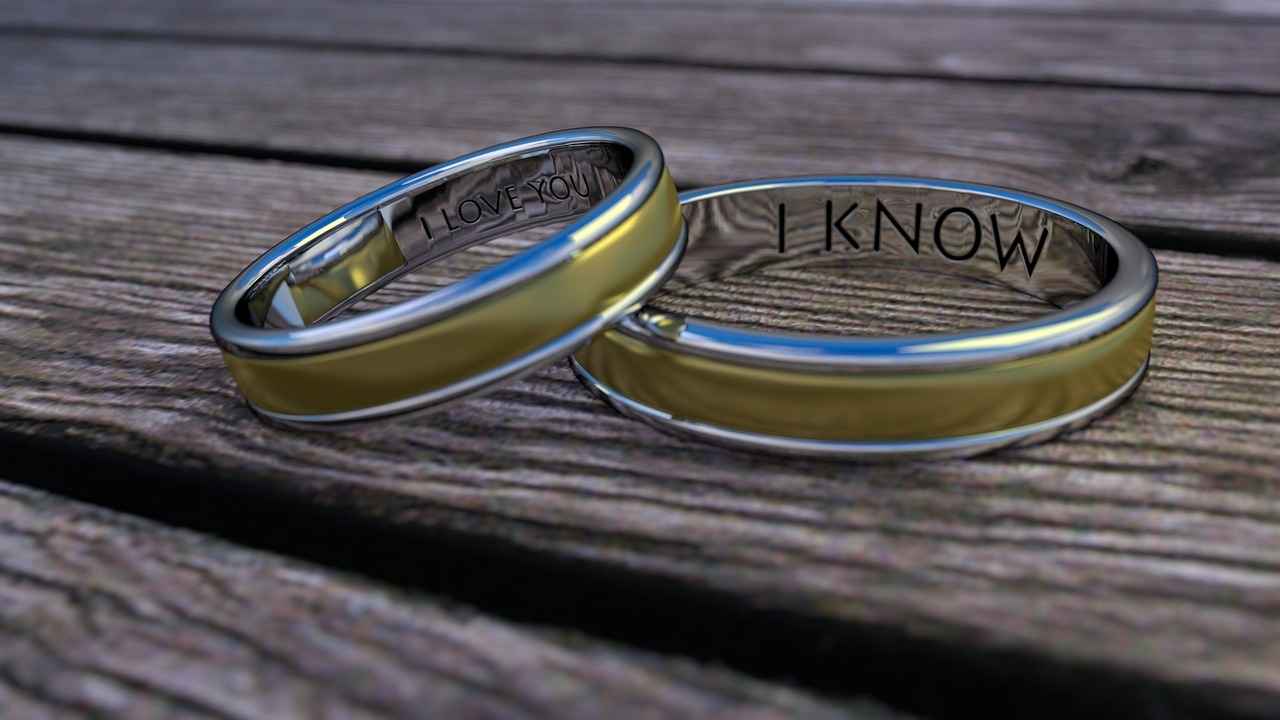
How to Choose the Right Signet Ring?
Choosing the right signet ring can be a meaningful and personal journey. These rings serve not only as a fashion statement but also as a representation of one’s identity and values. This guide aims to provide practical tips that will help you navigate the selection process, ensuring that your choice resonates with your individual style and significance.
Before diving into the specifics of material and design, it’s essential to understand your personal style. Ask yourself:
- What types of jewelry do I typically wear?
- Do I prefer classic or contemporary designs?
- What colors and metals do I gravitate towards?
By answering these questions, you can narrow down your options and select a signet ring that complements your overall aesthetic. Consider how the ring will fit into your daily life and wardrobe, ensuring it aligns with your unique personality.
The material of a signet ring plays a crucial role in its appearance and durability. Here are some popular options:
- Gold: A timeless choice, gold is available in various shades, including yellow, white, and rose. Each color offers a different vibe, so choose one that resonates with you.
- Silver: Often more affordable than gold, silver provides a sleek and modern look. It’s a great option for those who prefer a less traditional aesthetic.
- Alternative Metals: Materials such as titanium and tungsten are gaining popularity for their strength and unique finishes. These options can provide a contemporary twist on the classic signet ring.
When selecting the material, consider factors such as allergies, maintenance, and how the material will age over time.
The design of a signet ring is where personal expression truly shines. Here are some design elements to think about:
- Emblems or Symbols: Many choose to engrave family crests, initials, or personal symbols. This customization reflects personal history and values.
- Shape and Style: Signet rings come in various shapes, including oval, square, and round. The style should align with your personal taste and how you plan to wear the ring.
- Stone Inclusions: Some signet rings feature gemstones, which can add color and personality. Consider the significance of the stone and how it relates to your identity.
Ensuring that your signet ring fits comfortably is essential. Here are some tips:
- Measure Your Finger: Use a ring sizer or visit a jeweler to determine your size accurately.
- Consider the Width: Wider bands may require a slightly larger size for comfort. Keep this in mind when making your selection.
Lastly, establish a budget before you start shopping. Signet rings can vary significantly in price based on material, design, and craftsmanship. Setting a budget helps narrow down your options and prevents overspending.
Choosing the right signet ring is a blend of personal style, material selection, and thoughtful design. By considering these factors, you can find a ring that not only enhances your look but also serves as a lasting symbol of your identity and values.
Understanding Your Personal Style
When it comes to selecting a signet ring, is essential. A signet ring is not just a piece of jewelry; it is an expression of your identity, values, and aesthetic preferences. Therefore, it’s important to consider how the ring will fit into your overall look and lifestyle.
Your personal style reflects your individuality and can be influenced by various factors such as your daily activities, fashion preferences, and even your profession. When choosing a signet ring, think about how it aligns with your existing wardrobe and the messages you want to convey.
- Identify Your Aesthetic: Are you drawn to classic, modern, or bohemian styles? Understanding your aesthetic helps narrow down your options.
- Consider Your Lifestyle: If you lead an active lifestyle, you may prefer a more durable and understated design, while a more formal setting might allow for intricate and bold choices.
- Reflect on Your Values: Do you value sustainability? Look for rings made from ethically sourced materials or those that support artisan craftsmanship.
The material of the signet ring plays a significant role in its overall appearance and how it complements your style. Common materials include:
- Gold: A classic choice that exudes elegance and timelessness.
- Silver: Offers a contemporary feel and is often more affordable.
- Alternative Metals: Options like titanium or stainless steel can provide a modern twist.
In addition to material, consider the color of the ring. A ring that features gemstones or unique finishes can add a pop of color and personality to your look.
The design of the signet ring should resonate with your personal style. Here are some design elements to consider:
- Engraving: Personal engravings can make the ring uniquely yours, whether it’s initials, a symbol, or a meaningful date.
- Shape: Traditional signet rings are oval or rectangular, but modern designs may vary. Choose a shape that feels right for your hand and complements your overall aesthetic.
- Size: The size of the ring should not only fit comfortably but also match your style. A larger ring can serve as a statement piece, while a smaller one may be more understated.
Consider how often you plan to wear the ring. If it’s for everyday use, a simpler design may be more practical. On the other hand, if it’s for special occasions, you might opt for something more elaborate.
Another aspect of your personal style is how you integrate the signet ring with other jewelry. Layering rings or pairing them with bracelets and necklaces can create a cohesive look. Think about the metals and styles of your other pieces to ensure harmony.
Ultimately, your signet ring should reflect your personal style and feel like an extension of yourself. Take your time to explore different designs, materials, and engravings. A well-chosen signet ring can be a powerful symbol of your identity, making it a cherished addition to your jewelry collection.
Choosing the Right Material
When selecting a signet ring, one of the most critical factors to consider is the material used in its construction. The choice of material not only influences the ring’s durability but also its appearance and overall value. This section delves into the various materials available, highlighting their unique characteristics and how they can impact your choice.
Signet rings can be crafted from a variety of materials, each offering distinct advantages and aesthetic qualities. The most common materials include:
- Gold: A classic choice, gold is available in several colors, including yellow, white, and rose. Its timeless appeal and resistance to tarnish make it a popular option.
- Silver: Known for its bright, shiny finish, silver is often more affordable than gold. However, it requires regular maintenance to prevent tarnishing.
- Platinum: This metal is highly durable and resistant to wear and tear. Its rarity and weight give it a luxurious feel, making it an excellent choice for those seeking something special.
- Stainless Steel: A modern alternative, stainless steel is known for its strength and affordability. It’s a great option for those who want a contemporary look.
- Alternative Metals: Materials such as titanium and tungsten are gaining popularity for their unique properties, including lightweight and scratch-resistant features.
The durability of a signet ring is heavily influenced by the material chosen. For instance, while gold is soft and can be scratched easily, platinum is much more resistant to damage. If you lead an active lifestyle, opting for a more durable material like titanium or tungsten may be wise. These metals are not only tough but also maintain their polished look over time.
The appearance of your signet ring will also depend on the material. Gold rings can be easily engraved and are often adorned with gemstones, enhancing their visual appeal. Silver, while beautiful, may require more upkeep to maintain its shine. On the other hand, stainless steel offers a modern, industrial look that appeals to many.
Cost is another important factor when choosing a material for your signet ring. Gold and platinum are generally more expensive due to their rarity and the craftsmanship involved in creating them. In contrast, silver and stainless steel are more budget-friendly options, allowing for a stylish ring without breaking the bank.
When deciding on the material for your signet ring, consider the following:
- Your Lifestyle: If you work with your hands or lead an active lifestyle, opt for more durable materials.
- Personal Style: Choose a material that complements your personal aesthetic and aligns with your wardrobe.
- Maintenance: Consider how much upkeep you are willing to commit to in order to keep your ring looking its best.
- Budget: Set a budget before you start shopping to help narrow down your options.
In summary, the material of a signet ring plays a crucial role in its overall functionality and style. By understanding the various options available, you can make an informed decision that aligns with your personal preferences and lifestyle needs.

What Is the Future of Signet Rings?
The future of signet rings is poised to be exciting and dynamic, reflecting ongoing changes in fashion, technology, and cultural significance. As we delve into this topic, we will explore the evolving designs, innovative materials, and the influence of popular culture on these timeless pieces of jewelry.
As the world of fashion continues to evolve, signet rings are expected to embrace innovative designs that resonate with contemporary aesthetics. Traditional designs featuring family crests and monograms are likely to be complemented by modern interpretations, such as geometric shapes, minimalist styles, and even artistic engravings. This shift towards innovation allows wearers to express their individuality while paying homage to the ring’s historical significance.
With a growing emphasis on sustainability, the future of signet rings may also see a shift towards eco-friendly materials. Jewelers are increasingly exploring options like recycled metals and ethically sourced stones, catering to environmentally conscious consumers. This trend not only reduces the environmental impact but also adds a layer of meaning to the rings, making them symbols of responsible luxury.
Today’s consumers are seeking more personalized experiences, and signet rings are no exception. The future will likely see an increase in customization options, allowing individuals to engrave unique symbols, initials, or even meaningful quotes on their rings. This level of personalization enhances the emotional connection to the piece, transforming it into a cherished keepsake that reflects the wearer’s identity.
As popular culture continues to shape trends in fashion and jewelry, signet rings are increasingly making appearances in films, music, and social media. Celebrities and influencers showcasing signet rings can significantly boost their desirability among younger audiences. This cultural relevance not only enhances the appeal of signet rings but also encourages new generations to embrace these classic pieces.
Technological advancements are set to revolutionize the way signet rings are crafted. Techniques such as 3D printing and computer-aided design (CAD) are enabling jewelers to create intricate designs with greater precision and efficiency. These technologies also allow for rapid prototyping, making it easier for consumers to visualize their custom designs before production.
As fashion trends shift, signet rings are likely to evolve in their styling and usage. They may be worn stacked with other rings or paired with diverse outfits, from casual to formal wear. This versatility makes signet rings a staple accessory, appealing to a broad range of consumers. The fusion of traditional and contemporary styles will ensure that signet rings remain relevant in the ever-changing landscape of fashion.
Despite the influx of modern designs and materials, the tradition of passing down signet rings as heirlooms will likely continue. Families may choose to create custom designs that reflect their unique heritage, ensuring that these pieces carry significant sentimental value. This practice not only preserves family history but also fosters a sense of connection across generations.
In summary, the future of signet rings is bright, characterized by innovative designs, sustainable practices, and a deepening connection to personal identity and cultural significance. As we look ahead, it is clear that these timeless pieces will continue to evolve while maintaining their cherished place in the world of jewelry.
Innovations in Design
As we delve into the innovations in the design of signet rings, it’s essential to recognize how these pieces have adapted to modern aesthetics while preserving their historical significance. The evolution of fashion has prompted a reimagining of traditional jewelry, making signet rings not just symbols of authority but also expressions of personal identity.
Today’s signet rings are increasingly influenced by contemporary trends that appeal to younger generations. This shift is evident in:
- Unique Materials: While classic gold and silver remain popular, designers are experimenting with alternative materials such as titanium, carbon fiber, and even recycled metals. These materials not only enhance durability but also offer a modern twist on traditional designs.
- Bold Designs: Modern signet rings often feature geometric shapes and unconventional designs that cater to individual tastes. This trend allows wearers to showcase their personality through intricate engravings or unique motifs.
- Colorful Gemstones: Incorporating vibrant gemstones has become increasingly popular. These stones can represent personal significance or simply add a pop of color to the ring, making it a standout piece in any collection.
The advent of technology has transformed the way signet rings are designed and manufactured. With the rise of 3D printing and advanced engraving techniques, customization has reached new heights:
- 3D Printing: This technology allows for intricate designs that were previously impossible to achieve. Jewelers can create complex patterns and shapes that cater to individual preferences, making each ring truly unique.
- Personalization Options: Many jewelers now offer extensive customization options, allowing customers to engrave initials, family crests, or even meaningful symbols. This trend not only enhances the ring’s personal value but also aligns with the growing desire for individual expression in fashion.
As fashion trends evolve, signet rings are making a significant comeback. Their versatility allows them to be worn in various settings, from casual outings to formal events. This resurgence can be attributed to:
- Celebrity Influence: Many celebrities are embracing signet rings as part of their signature styles, showcasing them in public appearances and social media. This visibility has sparked interest among younger audiences.
- Fashion Collaborations: Collaborations between jewelry designers and fashion brands have introduced innovative signet ring designs that resonate with modern consumers. These partnerships often lead to limited-edition pieces that capture the essence of contemporary style.
Signet rings have always been symbols of identity and heritage. In today’s world, they continue to serve this purpose while adapting to new cultural contexts:
- Self-Expression: Modern wearers view signet rings as an extension of their personal style. By choosing unique designs and materials, individuals can express their values, beliefs, and creativity.
- Connection to Tradition: Despite the modern twists, many consumers still appreciate the traditional aspects of signet rings. This connection to history provides a sense of continuity and belonging, making these rings cherished heirlooms.
In summary, the future of signet rings is bright, with innovations in design and materials appealing to a broad audience while honoring their rich history. As they continue to evolve, signet rings will undoubtedly remain a significant part of personal expression and cultural heritage.
Signet Rings in Popular Culture
Signet rings have long been symbols of authority and personal identity, but their presence in popular culture has significantly influenced contemporary trends and perceptions. From films to fashion runways, the representation of signet rings in various media has shaped public interest and desire for these timeless pieces of jewelry.
Signet rings frequently make appearances in film and television, often associated with characters of power and wealth. Iconic films, such as The Godfather, feature characters who wear signet rings as a symbol of their status and family legacy. This portrayal not only highlights the ring’s historical significance but also enhances its desirability among audiences.
Celebrity endorsements and sightings can greatly influence jewelry trends. When high-profile figures are seen wearing signet rings, it often leads to a surge in popularity. For instance, when a celebrity is spotted sporting a customized signet ring, fans and fashion enthusiasts are likely to follow suit, seeking similar styles. This phenomenon showcases how celebrity culture can impact consumer preferences.
In recent years, signet rings have transitioned from traditional symbols of authority to fashionable statement pieces. Designers are now experimenting with modern interpretations, incorporating unique designs, colors, and materials. This evolution allows signet rings to appeal to a broader audience, especially younger generations looking for individuality in their jewelry choices.
Platforms like Instagram and TikTok have emerged as powerful tools for shaping jewelry trends, including signet rings. Influencers and fashion bloggers often showcase their unique styles, making signet rings a focal point in their outfits. The visual nature of these platforms allows for the rapid dissemination of trends, leading to increased interest and demand for signet rings.
The future of signet rings in popular culture looks promising. As trends evolve, we can expect to see continued innovation in design and use. Signet rings may become even more personalized, with individuals opting for custom engravings that reflect their unique identities. This trend toward personalization aligns with a growing desire for authenticity in fashion.
As signet rings gain visibility in popular culture, public perception shifts accordingly. The portrayal of these rings in media can enhance their desirability, making them not just a piece of jewelry but a symbol of fashionable individuality. As more people embrace signet rings, their significance may evolve, creating new meanings and associations.
In conclusion, the influence of popular culture on signet rings is undeniable. From their representation in media to the impact of celebrity endorsements, these factors shape public perception and desirability. As trends continue to evolve, signet rings will likely maintain their relevance, adapting to contemporary tastes while honoring their rich history.
Frequently Asked Questions
- What are the different styles of signet rings?
Signet rings come in various styles, including traditional designs featuring family crests or initials, as well as modern interpretations that incorporate unique shapes and materials. Whether you’re into classic elegance or contemporary flair, there’s a signet ring for everyone!
- Can signet rings be worn by anyone?
Absolutely! Signet rings are versatile and can be worn by anyone, regardless of gender. They make a bold fashion statement and can be personalized to reflect individual style and identity.
- How do I care for my signet ring?
To keep your signet ring looking its best, regularly clean it with a soft cloth and mild soap. Avoid exposing it to harsh chemicals, and consider storing it in a jewelry box to prevent scratches. With a little care, your ring can last for generations!
- Are signet rings only for formal occasions?
Not at all! While signet rings have a rich history tied to formality and authority, they are now embraced in casual and everyday wear as well. Pair them with jeans or a suit; they adapt beautifully to any setting!
- What materials are commonly used in signet rings today?
Modern signet rings are crafted from a variety of materials, including gold, silver, platinum, and even alternative metals like titanium. The choice of material can enhance the ring’s durability and aesthetic appeal, so choose one that resonates with you!

